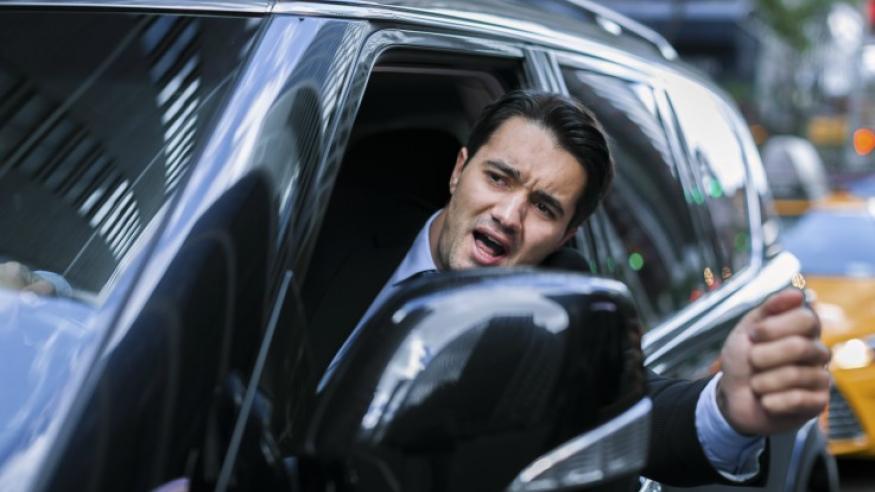
Summary & Quick Facts
- Aggressive driving refers to any display of aggression by a driver.
- An aggressive driver is a motorist who drives in a selfish and pushy manner, with a complete disregard for the rights or safety of others.
- Aggressive driving generally involves a traffic safety law violation while road rage involves violent behavior and a reckless disregard of traffic law.
- If you encounter an aggressive driver, try to safely de-escalate the situation as much as possible.
- Be courteous to others using the road and consciously try to avoid actions which can provoke other drivers.
Are Drivers In New York Really That Aggressive?
New Yorkers have a long held a reputation for being amongst the most aggressive and angry drivers in the country. Unfortunately, when you put a New Yorker behind the wheel, its often more of the same. Aggressive driving isn’t something New Yorkers should be proud of. In fact, driving in an aggressive manner puts ourselves and others in the city at serious risk. Learn about the dangers of aggressive driving and how you can keep your cool when behind the wheel.
What Is Aggressive Driving?
Aggressive driving refers to any display of aggression by a driver. Committing acts like tailgating, flashing headlights, speeding or weaving through traffic are just some many forms of aggressive driving.
The New York State defines an aggressive Driver a motorist who operates a vehicle in a selfish, bold or pushy manner, with a complete disregard for the rights or safety of others on the road. Aggressive driving may also include:
- Excessive Speed
- Frequent or Unsafe Lane Changes
- Failure to Signal
- Tailgating
- Failure to Yield the Right of Way
- Disregarding Traffic Controls
- Impaired Driving
- Cell phone / electronic device use
What’s The Difference Between Aggressive Driving And Road Rage?
While they may seem to be the same thing, aggressive driving and road rage are in fact defined differently under new york state law. As mentioned earlier, the State defines that aggressive driving may include speeding, tailgating, weaving in and out of traffic and being a nuisance to others who are in a vehicle, on a bicycle, or on foot.
Road rage, however, is an escalation of aggressive driving. Think of it as taking things to the next level. Road rage incites a driver to either attempt or to actually cause damage and harm to another driver. A driver acting out of road rage also makes others fearful by his or her angry and aggressive behavior. The two can also be thought of this way: while aggressive driving generally involves a traffic safety law violation; road rage usually involves criminal actions or attempts of violent behavior in addition to a reckless disregard of traffic law.
How to Deescalate Situations Involving Aggressive Drivers
If you encounter an aggressive driver, you want to safely de-escalate the situation as much as possible. Below we will provide some basic tips for dealing with aggressive drivers you may encounter on the road.
It ’s always important to remain calm as best as you can during encounters with aggressive drivers. Aggressive drivers, unfortunately, feed off the negative energy of other motorists. For this reason, it’s best if you try to minimize contact or interaction with an aggressive driver as much as you can. Here are some things you can do to minimize contact with aggressive drivers:
- Keep your distance
- Do not pass the offending driver unless you must for safety reasons
- Only change lanes moving away from the offending drivers once it is safe (don’t jump lanes without looking)
- If you cannot change lanes and an aggressive driver is behind you, stay where you are, maintain the proper speed and don’t respond with hostile language or gestures.
How to Avoid Encounters With Aggressive Drivers
While some aggressive driving situations cannot be avoided, there are some basic things that you can do to reduce your chances of getting involved in an aggressive driving or “road rage” incident. First, drivers should know that common courtesy is their best friend. Be courteous to others using the road and consciously try to avoid actions which can provoke other drivers. This is truly your best strategy to prevent yourself from getting into aggressive driving situations with other motorists.
Secondly, take measures to reduce your own stress so that you are less likely to feel aggressive yourself. Reducing the stress you feel open the road can help you keep your emotions in check and think about the consequences of your behavior before you react. It is also important to remain introspective behind the wheel. This means along with trying to adjust your attitude behind the wheel you should also think about why other drivers are behaving the way they are.
Why is Aggressive Driving Such A problem?
Part of the problem may simply be the roads themselves. The roads are crowded now more than ever. With more cars on the road, there’s a lot more congestion and longer wait times in traffic. All this congestion leads to frustration for many drivers behind the wheel.
